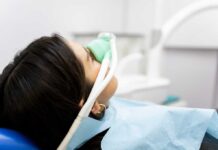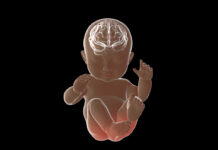
Those mysterious groans and creaks when you bend or sit aren’t signs of premature aging—they’re your body’s natural stabilization response happening at any age.
At a Glance
- Many bodily noises result from diaphragmatic bracing, a natural core-stabilizing mechanism that occurs during physical effort
- Joint sounds typically increase with age due to natural wear and tear in cartilage and decreasing bone density
- Regular exercise, stretching, and proper posture can help manage age-related bodily noises
- Consult a healthcare provider if bodily sounds are accompanied by pain, swelling, or functional limitations
- Age-related sensory changes, including hearing loss, can affect how we perceive our own body sounds
Why Your Body Makes Those Sounds
The grunts and sighs that escape when standing up from a chair or bending to pick something up aren’t necessarily signs of aging—they’re your body performing a natural function. Diaphragmatic bracing, the physiological process responsible for these sounds, stabilizes your core during physical exertion. This automatic response helps protect your spine and provides stability during movement, regardless of your age. Many people mistakenly associate these sounds exclusively with older adults, but they can occur at any life stage, particularly during physically demanding tasks.
However, the frequency and intensity of bodily noises often increase with age due to natural physiological changes. As we grow older, our joints experience wear and tear, cartilage thins, and muscles lose mass and strength. These changes can lead to more noticeable sounds during movement. Additionally, bone density decreases with age, potentially leading to conditions like osteopenia and osteoporosis, which may contribute to skeletal sounds during activity. While these changes are natural parts of aging, understanding their causes can help differentiate between normal processes and potential health concerns.
Age-Related Sensory Changes
Aging affects all our senses, including how we perceive sounds—both external and those generated by our own bodies. Age-related hearing loss, or presbycusis, typically begins with difficulty detecting high-frequency sounds and understanding speech in noisy environments. This change in auditory perception may influence how we hear and interpret our own bodily noises. Some sounds may seem louder or more pronounced due to these sensory shifts, while others might go unnoticed due to hearing threshold changes.
Sensory changes extend beyond hearing to touch and proprioception—our awareness of our body’s position in space. Changes in touch and vibration perception can affect how we experience movement and potentially increase injury risk. These alterations in sensory feedback may influence how we move and respond to physical activities, creating a cycle where movement patterns change, potentially leading to new bodily sounds. Understanding these sensory shifts helps explain why some bodily noises might seem more prominent as we age.
Managing Body Sounds Effectively
Regular physical activity is one of the most effective ways to address age-related bodily noises. Exercise helps maintain muscle mass, joint flexibility, and bone density—all factors that contribute to how our bodies sound during movement. Strength training specifically targets muscle preservation, while flexibility exercises help maintain joint mobility and reduce stiffness. Even moderate activities like walking, swimming, or cycling can significantly benefit overall physical function and potentially reduce unnecessary bodily sounds during routine movements.
Proper posture and body mechanics also play crucial roles in managing bodily noises. Maintaining good alignment reduces unnecessary strain on joints and muscles, potentially decreasing sounds during movement. Simple adjustments, like bending at the knees instead of the waist when lifting objects or maintaining proper posture while sitting, can significantly impact how your body sounds during daily activities. Additionally, staying hydrated and maintaining a healthy weight reduces stress on joints, potentially minimizing creaking or popping sounds during movement.
When to Seek Medical Advice
While most bodily sounds are harmless, certain symptoms warrant medical attention. New or sudden onset of popping, grinding, or cracking sounds accompanied by pain, swelling, or decreased range of motion could indicate an underlying issue requiring assessment. Persistent joint noises that worsen over time or sounds that significantly limit daily activities should prompt a conversation with your healthcare provider. Early intervention for potential joint problems can prevent further deterioration and preserve function, making it important not to dismiss concerning symptoms.
Your healthcare provider can differentiate between normal age-related changes and conditions requiring treatment, such as osteoarthritis, rheumatoid arthritis, or tendon injuries. They may recommend lifestyle modifications, physical therapy, medication, or other interventions based on your specific situation. Remember that while some bodily noises are part of the natural aging process, you don’t need to accept pain or functional limitations as inevitable consequences of getting older. Many effective treatments and management strategies exist to help maintain comfort and mobility.


















